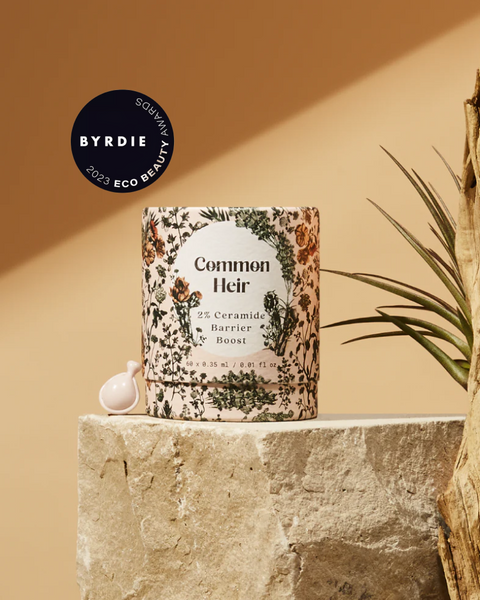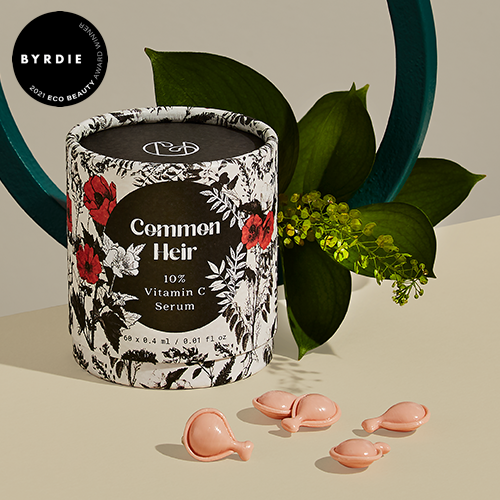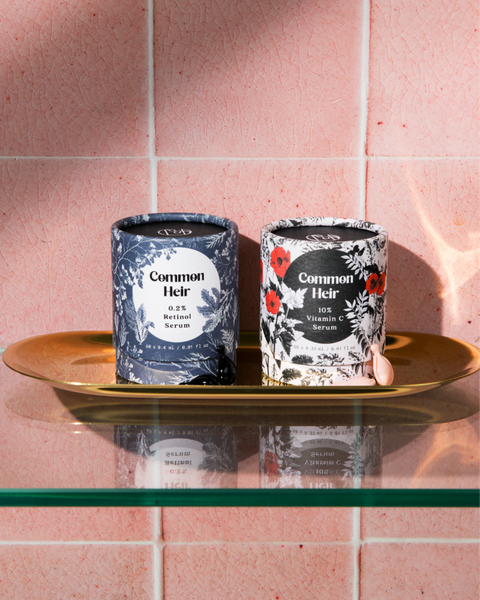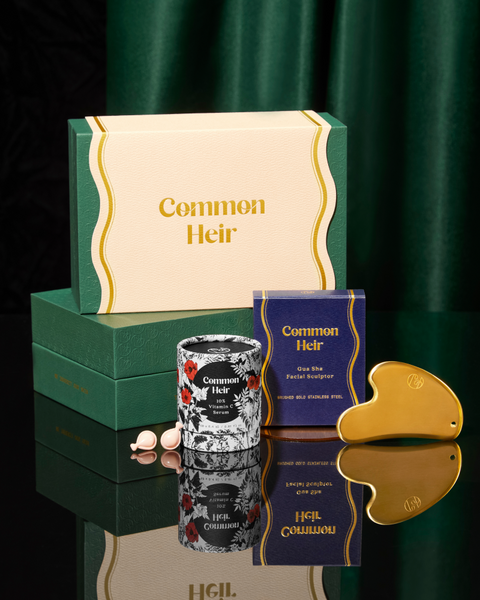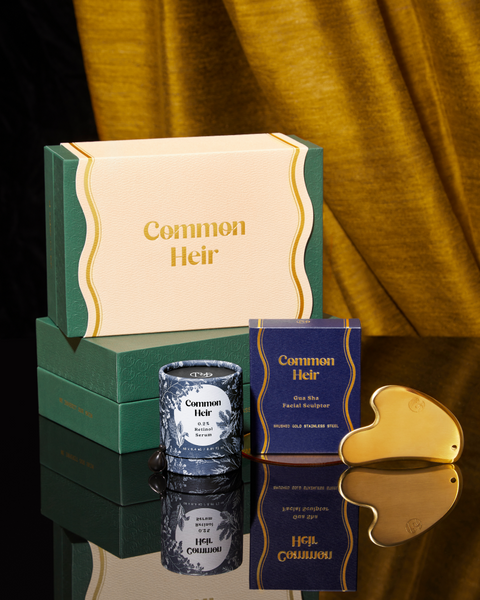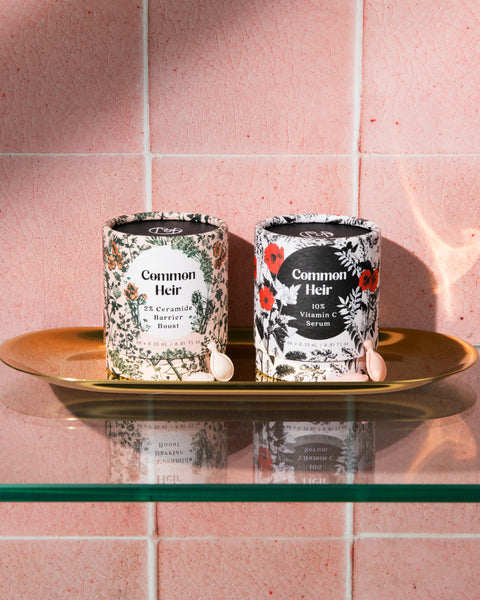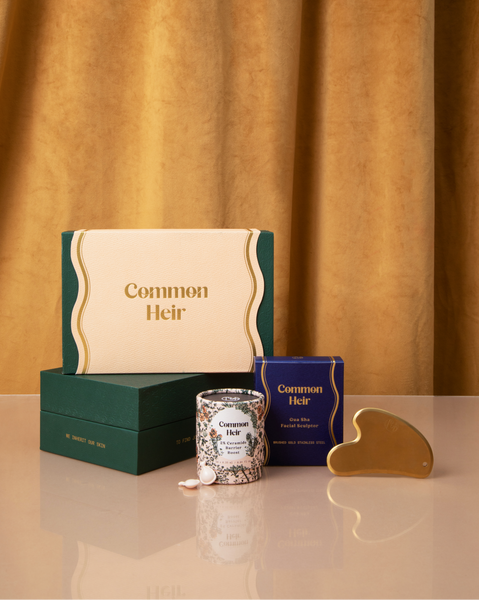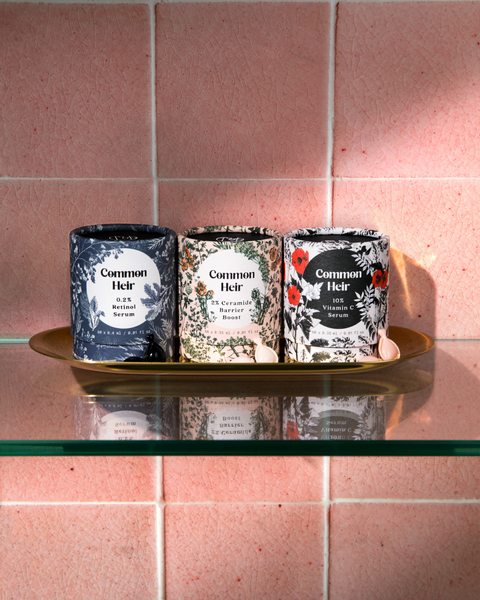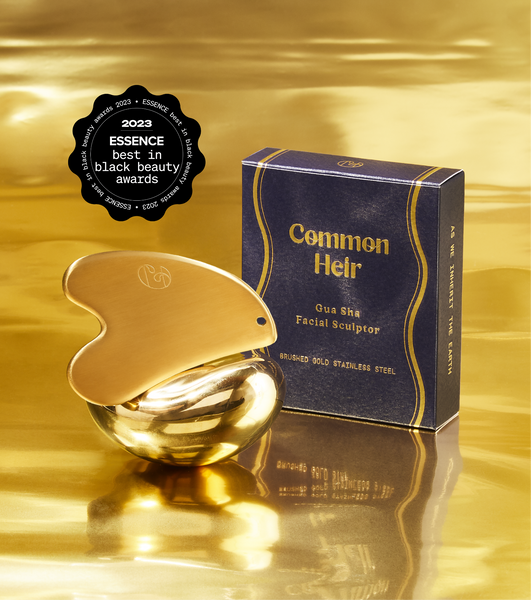We get it, you’re skeptical about Vitamin C skincare. You’ve had a bad experience before: it smelled weird, it stopped working, you were burned by it… literally. You’re not alone. It’s why we made it our mission to create a Vitamin C Serum with all the benefits and none of the irritation.
When formulating with Vitamin C, we discovered 3 key elements essential to your skin’s success, yet rarely discussed. So today, we’re spilling the tea on Vitamin C.
Don’t assume all Vitamin C is the same
We have to have an honest conversation about L-ascorbic acid. It’s the most common, more cost-effective Vitamin C derivative found in water-based creams, gels, and serums. Its well-earned reputation for being unstable and oxidizing quickly means it can appear in higher concentrations, making irritation even worse.
At Common Heir, we use an oil-soluble Vitamin C derivative called Tetrahexyldecyl Ascorbate, or THD. It’s far more stable and bonds beautifully in oil-based formulas, like our serum. With beauty products, oil > water as it helps formulas penetrate skin on a deeper level than traditional water-soluble L-ascorbic acid. That means we can use a lower concentration of THD without compromising results.
Do go for a stable, oil-soluble Vitamin C derivative like THD to get the glow without the burn.
Do know the percentage of Vitamin C in your serum
Whether trying Vitamin C for the first time or aiming to improve on an underwhelming or irritating experience with the wrong formula, a top factor to consider is concentration of the active ingredient. From there, be cautious of any that are boasting bloated numbers.
The sweet spot for Vitamin C is a 10-12% concentration with a stable derivative, like THD. In developing our Vitamin C Serum, we found that 10% THD helped us get to a formula that solved our — and your — skincare wish list:
- gentle for sensitive skin
- powerful enough to please Vitamin C vets
- hydrates and protects as it brightens, smoothes, evens skin tone and texture
In formulas that feature L-ascorbic acid, you’ll notice that percentages are often high. Here, more does not mean better. The more cost-effective ingredient is, ironically, less effective, so brands pump the cheaper derivative into products to see results. That’s a recipe for the no-thank-yous on your skincare wish list:
- stinging and blistering effect
- unsavory chemical smells
- lack of results, especially over time
Don’t assume more is better. 10-12% is the right range for Vitamin C benefits minus the burn, especially with a higher grade derivative like THD.
Don’t sleep on supporting ingredients in your Vitamin C serum
For actives, the star ingredient needs a well-balanced cast of emollients, oils, and extracts that will suspend the formula, maintain its shelf life, and extend benefits. In Common Heir’s Vitamin C Serum, you’ll find:
- coconut-derived emollients to soften and hydrate
- rice bran extract to smooth and condition
- a skin-brightening botanical blend of marshmallow and licorice root extracts
— all working together to boost THD’s brightening, plumping, glowing powers.
What you don’t want are extra ingredients that don’t serve a positive purpose. In many traditional Vitamin C products using L-ascorbic acid, elements are added just to curb the derivative’s negative side effects. Using THD in our Vitamin C Serum, means we got to focus on only the best to boost the antioxidant’s natural preventive and restorative benefits.
Do read the label to make sure every ingredient benefits your beautiful skin.
